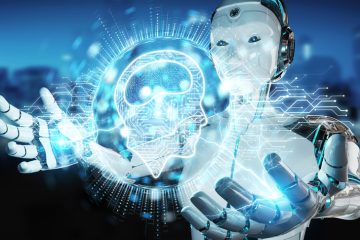How Verification Software Can Protect With Biometrics

Biometric verification software is quickly becoming one of the most popular methods of authentication. This data-driven technology provides a higher level of security by using unique personal characteristics — such as fingerprint, face (iris or retina), voice, or other physical characteristics — to validate your identity.
Biometric authentication is just one of many options for multi-factor authentication
The biometric authentication process is designed to verify the identity of a person. It can also be used for device and application authentication, but for simplicity’s sake, focus on its use as a second factor in multi-factor authentication systems.
How does biometric authentication work?
Biometric devices are used to scan fingerprints and retinas or measure hand geometry or facial characteristics. The information collected is then compared with data stored in a database or compared against live scans taken over time if your company uses single sign-on software.
Biometric authentication helps with access control
Biometric authentication is a more secure, reliable way to control access to a system than passwords or physical documents. The most common use of biometric authentication is to control access to a system. For example, you might want to allow only certain people into your home or office building. The best way to accomplish this is with the use of biometrics. You can unlock the door using your fingerprint, iris scan, or palm vein pattern to name just three different ways. And while each person has their unique signature in terms of what makes up their fingerprint or iris pattern, no two are exactly alike. This means that there’s no chance that someone could enter the system by just copying what someone else did earlier on the day.
Some think biometric authentication is insecure
Biometric authentication is more secure than many other methods. Passwords, for example, are notoriously easy to steal and crack. The same goes for physical tokens—they can be easily stolen or forgotten. One-time passwords tend to be no better. Biometrics are different, as they can’t be copied or shared easily like passwords and physical tokens can. For that reason, they’re considered safer in terms of protecting your personal information from hackers and cybercriminals who want access to your data without permission.
Behavioral characteristics can also be used for biometric authentication.
Behavioral characteristics can also be used for biometric authentication. Behavioral characteristics are characteristics of how you act, move, or speak. For example, if someone asked you to show them your driver’s license and then walked away from you while looking at it, that person would have no idea if what they saw was a real driver’s license or not. But if it was genuine and authentic, chances are very high that the person could still tell that it was real because of certain things about how their body moved when they showed them their ID card along with some other visual cues that would let us know whether this person is who they claim to be.
Biometrics should be used along with a two-factor authorization system to increase security
The fact that biometrics are more secure than passwords and PINs is a good thing. But they should be used alongside other types of authentication, not as a replacement. Biometrics should be the secondary form of verification when using the two-factor authorization system.
Conclusion
Biometric authentication has come a long way since its introduction in the early 1900s. Today, it’s used in everything from passports to credit cards and even smartphones with Apple’s Face ID. This type of multi-factor authentication is particularly well suited for organizations that want to bolster their security while still providing their users with convenient access. By using biometrics along with other types of identity verification, such as passwords and PINs, businesses can ensure that only authorized individuals have access to sensitive information or systems.









